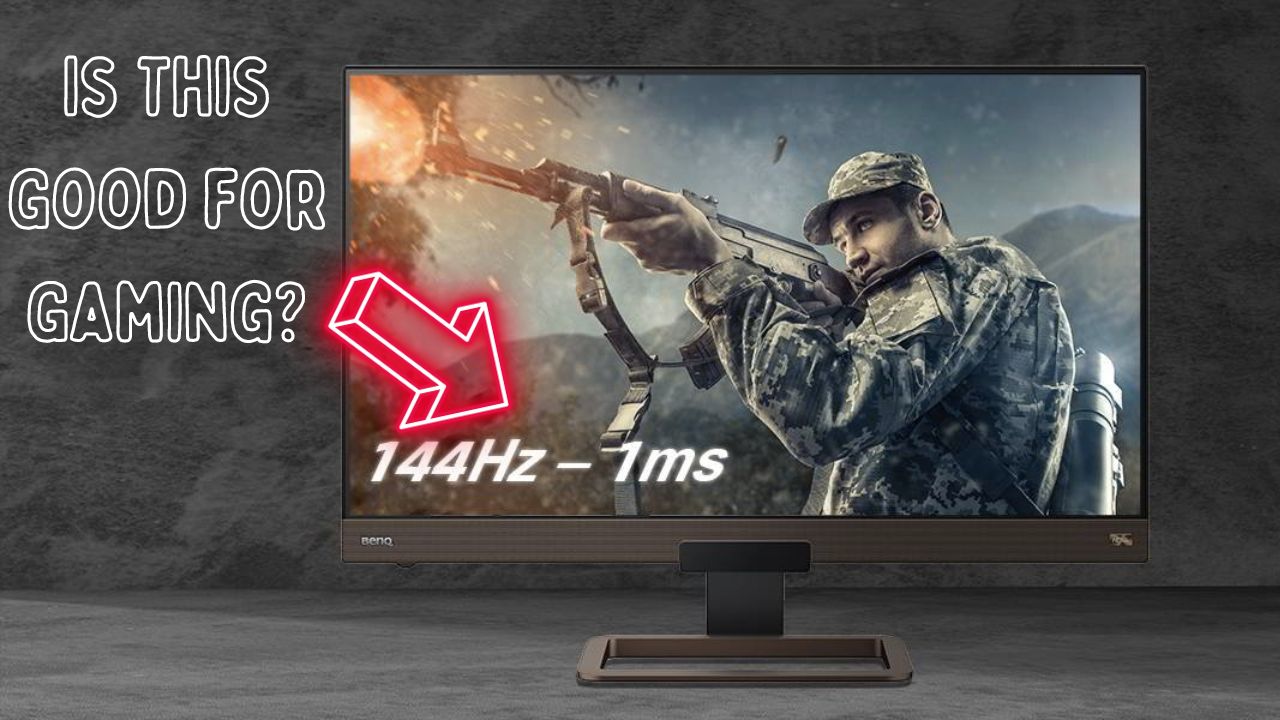Are you a pro gamer aiming for that split-second advantage that could tip the scales in your favor during a heated battle?
The response time of your gaming monitor could very well be a vital key. In this article, I’ll explain what response time is in monitors, focusing on whether a 1ms response time benefits gaming and more.
Understanding Response Time in Monitors
Response time is a key monitor feature, describing how quickly a pixel can change colors. It’s usually counted in milliseconds (ms) and can considerably affect your gaming experience because:
- It impacts the smoothness of moving images
- High response time values may result in ghosting or motion blur during fast-paced game scenes.
Notably, there are two famous response time metrics:
- Grey-to-grey (GTG) – This represents the time it takes for a pixel to change from one shade of grey to another.
- Moving Picture Response Time (MPRT) – Measures the time it takes for a pixel to change from one color to another and then back to its original color.
The Benefits of 1ms Response Time
A 1ms response time has significant benefits for gamers. These include:
- Reduction of motion blur and ghosting: A faster response time eliminates visual distortions during quick game movements.
- Improved gaming experience in fast-paced games: High-speed genres like racing and FPS games benefit from the crisp and precise rendering of a 1ms response time.
- Enhanced competitive edge: For high-stakes gaming environments, every millisecond counts. Shaving milliseconds off your reaction time can give you a significant competitive advantage.
Comparison of 1ms Response Time with Other Metrics
The table below compares 1ms to 4ms, 8ms, and higher response times:
| Response Time | Pros | Cons | Optimal Scenarios |
|---|---|---|---|
| 1ms | Minimal motion blur and ghosting, optimal for fast-paced games and competitive gaming | It can be more expensive and might overdramatize certain visual effects in slower games | Perfect for eSports and any gaming scenario where timing is key |
| 4ms | Reduced visual disturbances, a middle ground between performance and value | There is slightly more motion blur and ghosting than 1ms, which is less optimal for fast-paced games | Good for most gaming scenarios, a balance between cost and performance |
| 8ms and Higher | More affordable than lower response time monitors | Noticeable motion blur and ghosting, less favorable for fast-paced gaming | Casual gaming, slower games, or multimedia applications |
Factors to Consider When Selecting a Gaming Monitor

Choosing the right gaming monitor can enhance your gaming experience significantly. However, it requires a balance of several factors. Here are the key aspects you should consider while selecting a suitable gaming monitor:
- Refresh Rate: The number of times a screen updates with a new image per second is measured in Hertz (Hz). Higher refresh rates lead to smoother movement and transitions, providing a better gaming experience, especially in fast-paced games.
- Screen Resolution: The number of pixels crammed into the display and represented as (Width x Height). Higher screen resolution means sharper images but requires more from your graphical hardware.
- Panel Types: There are three main types – In-Panel Switching (IPS), Twisted Nematic (TN), and Vertical Alignment (VA). IPS provides the best color reproduction and viewing angles but has slower response times. TN has fast response times and is cheaper but lacks color reproduction and viewing angles. VA balances the two but can have problems with response times and blurriness.
- Input Lag: Input lag is the delay between executing an action (such as moving the mouse or pressing a key) and seeing the result on your monitor. In fast-paced competitive games, lower input lag can make a crucial difference.
- Price and Value for Money: You must consider the cost, like any purchasing decision. Spending thousands on a top-of-the-line gaming monitor won’t make sense if you’re not using it to its full potential. Conversely, skimping on the monitor could limit the performance of your high-end PC. Consider your gaming needs and what features matter to you when determining the value for money.
Evaluating these factors based on your gaming needs, preferences, and hardware can help you choose the perfect gaming monitor that delivers a satisfying and immersive gaming experience.
Making the Right Decision for Your Gaming Needs
Balancing response time with other monitor features and considering your preferences, gaming habits, and budget are crucial in determining your ideal monitor.
Considering that, I recommend exploring these two popular gaming monitors with a 1ms response time –
ASUS ROG Swift PG258Q: This monitor offers a 240Hz refresh rate, 1080p resolution, and TN panel, catering to high-speed gaming needs.
Acer Predator XN253Q: With similar specifications to the ASUS model, this monitor also features NVIDIA G-SYNC, reducing screen tearing for a smoother gaming experience.
Conclusion
In conclusion, the benefits of a 1ms response time in gaming are clear, especially in fast-paced, competitive environments. I encourage you to weigh the advantages and make informed decisions based on your gaming needs.



